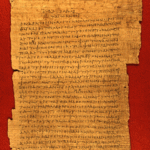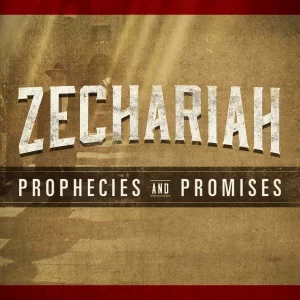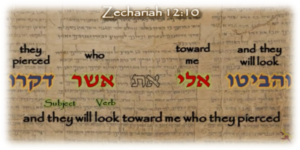Luke – the Investigative Reporter

For centuries many have endeavored to prove or disprove the Gospel of Luke’s account about the life of Jesus of Nazareth. Some have focused on the integrity of the content, others on the identity of the unnamed author; however, there are substantial factors to consider.
Among the first to document the identity of the author of the Gospel was Irenaeus, a student of Polycarp who was in turn a pupil of John, one of the original 12 Disciples of Jesus.[1] Irenaeus identified the author as the Gentile doctor named Luke, the inseparable traveling companion of the Apostle Paul mentioned several times in New Testament books.[2]
Logic is a big factor – consider he was educated as a doctor and a source just one generation removed from the Disciple John.
Credibility of a statement can be determined regardless of the identity of the author. In this case, the Gospel author’s first defining point of credibility is where his investigative letter is addressed to a specific person.
Theophilus is the same name to whom the Book of Acts was also written establishing both accountability and consistency of the two accounts. Josephus identified Theophilus as the next High Priest after Jonathan circa 37-40 AD.[3]
Very clearly the author describes to Theophilus the basis of his investigation:
LK 1:1-4 “Many have undertaken to draw up an account of the things that have been fulfilled among us, just as they were handed down to us by those who from the first were eye-witnesses and servants of the word. Therefore, since I myself have carefully investigated everything from the beginning, it seemed good also to me to write an orderly account for you, most excellent Theophilus, so that you may know the certainty of the things you have been taught.” (NIV)
Not himself an eyewitness, instead Luke identifies the sources of his investigation, noted as “many,” being original eyewitnesses and he personally investigated their validity. Evidence can be seen in the quotes and parallels passages found in the older Gospels of Matthew and Mark and corroborated with information by John account.
From a different perspective, the author’s omissions of certain witness accounts and miracles that are mentioned in the other Gospels.[4] Nearly half of Luke’s content is unique in which 6 miracles are reported, including the resurrection of a dead boy, and 15-17 parables (was it an illustration or a parable?).[5]
Included in Luke, too, are the exclusive accounts of the birth circumstances of John the Baptist; the identity of his father, Zachariah and mother, Elizabeth, and her role with Mary during their pregnancies; the angel Gabriel with his messages from God delivered separately to Zachariah and Mary, and Mary’s hymn of praise.
Found only in Luke and Acts are the two Greek words, apographo and apographe – a verb and a noun – cited as the motivation for Joseph to take his nearly 9-month pregnant wife, Mary, to Bethlehem 90 miles away. Neither Greek word translates to the equivalent English word of “census,” often imprecisely used in Matthew’s Christmas Nativity story.[6]
Seven government rulers are identified in Luke, all corroborated in secular history including Caesar Augustus , Tiberius Caesar, Judean King Herod, and Tetrarchs Herod and Philip.[7] Two “governors,” Quirinius and Pilate, were both identified using the exclusive Greek word hegemoneuo, meaning to act with authority as governors, though not necessarily official “governors.”[8]
Two specific crucifixion scenarios are found only in the Luke’s Gospel. Quoted is the conversation between the criminals being crucified with Jesus. Upon his death, distraught witnesses reacted by “beating their breasts” in severe mourning.
Distinctively identified and quoted are Resurrection witnesses. Most notable is Cleopas with his traveling partner heading home to Emmaus after being with some of the Disciples that weekend.[9]
Unrecognized, Jesus joined Cleopas and his partner walking down the road and asked what they were discussing so intently. Cleopas is quoted explaining the sequence of events involving the encounter by the women of Galilee with angels at the empty tomb who proclaimed Jesus was alive and how the empty tomb was confirmed by other unnamed witnesses.[10]
Corroborating John’s eyewitness Gospel account of the gathering of Disciples and followers in the locked room that Sunday evening, Luke adds a distinguishing depiction of events. Cleopas and his partner had rejoined the gathering telling of their encounter with the resurrected Jesus and, in turn, they were told Jesus had also appeared to Simon (Peter).
Terrified is how the excited group encounter is described by Luke when Jesus suddenly appeared in the locked room. Thinking they were seeing a ghost, Jesus calmed their fears saying “Do you have anything here to eat?” and ate some fish to prove he was not a ghost.[11]
Omitted is key information which could otherwise enhance the Resurrection account if the author had chosen to do so. Missing is Mary Magdalene’s encounter with the resurrected Jesus and John running with Peter to see the empty tomb, both reported events that astounding morning.
One possible reason for the omissions is revealed in Cleopas’ witness statement. At the point when he departed for home that Sunday morning, it was before anyone had reported seeing the resurrected Jesus.
Omission of Mary Magdalene encounter with Jesus is a big clue that his Gospel is a collection of witness accounts. Luke had to be aware of Mary Magdalene’s encounter with resurrected Jesus through his investigation, by knowing Paul, contacts with the Disciples and interviews of other witnesses.[12]
Previously, Mary Magdalene was identified as the one from whom Jesus expelled seven demons early in his ministry. Later, Mary Magdalene was one of the three named women generally reported to have run back from the empty tomb to tell the Disciples of their experience.
Only twice in the entire Gospel of Luke is Mary Magdalene mentioned.[13] No statements are specifically attributed to Mary Magdalene in the Gospel of Luke and therein lies the potential reason for the omission.
Mary Magdalene was not a witness that Luke interviewed. If Luke did not have direct access to her as an eyewitness source, then he chose not to include her secondhand account.
Likewise are similar reasons for not identifying the traveling partner of Cleopas and omitting John running with Peter to see the empty tomb – neither were available witnesses to the author. (In his own eyewitness Gospel, John identifies himself as the “other disciple” who joined the race to the tomb.)[14]
Forthright acknowledgements, exclusive specific details, omissions of information seen in other Gospels; corroboration by secular history; named witnesses; quotes; lack of personal opinions or injections; and ignored opportunities to embellish – all are hallmarks of a straightforward, true investigative report.
Is Luke’s Gospel authorship and investigative account true?
Updated October 21, 2024.
This work is licensed under a Creative Commons Attribution-NonCommercial-NoDerivatives 4.0 International License.
REFERENCES:
[1] Schaff, Philip. “Introductory Note to Irenæus Against Heresies.” Ante-Nicene Fathers. Volume I. n.d. Christian Classics Ethereal Library. 2005. <http://m.ccel.org/ccel/schaff/anf01.ix.i.html Schaff, Philip. “Introduction Note to the Epistle of Polycarp to the Philippians.” Ante-Nicene Fathers. Volume I. n.d. Christian Classics Ethereal Library. 2005. <http://m.ccel.org/ccel/schaff/anf01.iv.i.html Irenaeus of Lyons. Against Heresies. Book III, Chapters I.1, X.1, XIII.3, XIV.1, XIV.1, XIV.2 quoting Luke 1:2, XIV.3, XV.1, 3, XXIII.1. Philip Schaf, ed. Ante-Nicene Fathers. Volume I. Christian Classics Ethereal Library. 2005. <http://www.ccel.org/search/fulltext/Heresies
[2] Colossians 4; Philemon 1; 2 Titus 4. Irenaeus, Heresies. Book III, Chapter XIV.1. Aherne Cornelius. “Gospel of Saint Luke.” The Catholic Encyclopedia. Volume 9. 1910. <http://www.newadvent.org/cathen/09420a.htm>
[3] Josephus, Flavius. Antiquities of the Jews. Book XVIII, Chapter V.3, Book XX, Chapter VIII.5 & 7; Book XVII, Chapter IV.2; Book XVIII, Chapter V.3; Book XIX, Chapter VI.2; Book XX, Chapter IX.7. The Complete Works of Josephus. Trans. William Whitson. <http://books.google.com/books?id=e0dAAAAAMAAJ&printsec=frontcover&source=gbs_ge_summary_r&cad=0#v=onepage&q&f=false> CR Josephus. Antiquities. Book XVII, Chapter IV.2. “Theophilus.” Jewish Encyclopedia. 2011. <https://jewishencyclopedia.com/articles/14364-theophilus>
[4] Swete, Henry Barclay. The Gospel According to St. Mark, pp. xxxvix – xl, LXX, LXXII, LXXIV-LXXV. 1902. <https://books.google.com/books?id=WcYUAAAAQAAJ&lpg=PA127&ots=f_TER300kY&dq=Seneca%20centurio%20supplicio%20pr%C3%A6positus&pg=PP1#v=onepage&q&f=false Smith, Barry D. “The Gospel of Mark.” Crandall University. n.d. <http://www.mycrandall.ca/courses/NTIntro/Mark.htm> “Introductions to Matthew.” Ryrie Study Bible. Ed. Ryrie Charles C. Trans. New American Standard. 1978. “Introductions to Matthew.” Ryrie Study Bible. “Introduction to the Book of Mark.” Ryrie Study Bible. “Introduction to the Book of Luke.”&Ryrie Study Bible. “New Testament.” Jewish Encyclopedia. 2011. <http://www.jewishencyclopedia.com/articles/11498-new-testament> “gospel.” ReligionFacts.com. 2016. <http://www.religionfacts.com/christianity/texts/gospels.htm> Gloag, Paton J. Introduction to the Synoptic Gospels. pp 45, 204.. 1895. <http://catalog.hathitrust.org/Record/008728595>
[5] Gloag, Introduction to the Synoptic Gospels. pp 38-42. 1895. <http://catalog.hathitrust.org/Record/008728595> Smith, Barry D. “The Gospel of John.” F. 5.3.3. Crandall University. 2015. <http://www.mycrandall.ca/courses/NTIntro/John.htm Sween, Don and Nancy. “Parable.” BibleReferenceGuide.com. n.d. <http://www.biblereferenceguide.com/keywords/parable.html Sween. “Parable.” Swete. The Gospel According to St. Mark, pp. LXXIV, 83. 1902. <https://books.google.com/books?id=WcYUAAAAQAAJ&lpg=PA127&ots=f_TER300kY&dq=Seneca%20centurio%20supplicio%20pr%C3%A6positus&pg=PP1#v=onepage&q&f=false> “Luke.” Easton’s 1897 Bible Dictionary. 3rd Edition. Christian Classics Ethereal Library. n.d. <http://www.ccel.org/e/easton/ebd/ebd/T0002300.html#T0002331> “Parable.” International Standard Bible Encyclopedia. 2018. <http://www.internationalstandardbible.com/P/parable.html> “The Parables of Jesus.” Ryrie Study Bible. “The Miracles of Jesus.” Ryrie Study Bible. Fairchild, Mary. “Miracles of Jesus: From Healing the Sick to Turning Water Into Wine.” ThoughtCo. n.d. <<https://www.learnreligions.com/miracles-of-jesus-700158>
[6] Luke 2; Acts 5. Net.bible.org. Greek text. “aprographe <582>.” Lexicon-Concordance Online Bible. n.d. <http://lexiconcordance.com/greek/0582.html> “apographo <583>.” Lexicon-Concordance Online Bible. n.d. <http://lexiconcordance.com/greek/0583.html> The Complete Works of Josephus. Trans. and commentary. William Whitson. 1850. <https://books.google.com/books?id=e0dAAAAAMAAJ&printsec=frontcover&source=gbs_ge_summary_r&cad=0#v=onepage&q=census&f=false> Smith, William; Wayte, William; Marindin, G.E., Ed. A Dictionary of Greek and Roman Antiquities. 1890. “apographe.” <https://books.google.com/books?id=Cu89AAAAYAAJ&pg=PA403&lpg=PA403&dq=greek+word+for+census&source=bl&ots=LM1MjmCiJt&sig=1_yjJgyNxcCcSWZvf0QK69IJuMw&hl=en&sa=X&ved=0ahUKEwjx0oPA04DYAhXo6YMKHebvAEwQ6AEIejAK#v=onepage&q=register&f=false>
[7] Luke 2, 3. Net.bible.org. Luke 2:1 footnote #5 and Greek text. “hegemoneuo <2230>” Lexicon-Concordance Online Bible. Josephus. Antiquities. Book VIII, Chapter XV; Book X, Chapter IV; Book XIV, Chapter IX, & XII; Book XVIII, Chapter VI. Josephus, Flavius. The Life of Flavius Josephus. #9, 17. The Complete Works of Josephus. Trans. William Whitson. <http://books.google.com/books?id=e0dAAAAAMAAJ&printsec=frontcover&source=gbs_ge_summary_r&cad=0#v=onepage&q&f=false Josephus, Flavius. Wars of the Jews. Book I, Chapter XXVII. The Complete Works of Josephus. Trans. William Whitson. <http://books.google.com/books?id=e0dAAAAAMAAJ&printsec=frontcover&source=gbs_ge_summary_r&cad=0#v=onepage&q&f=false> Josephus, Flavius. Against Apion. Book II, #22. The Complete Works of Josephus. Trans. William Whitson. <http://books.google.com/books?id=e0dAAAAAMAAJ&printsec=frontcover&source=gbs_ge_summary_r&cad=0#v=onepage&q&f=false> “Pontius Pilate.” Livius.org. Ed. Jona Lendering. 2014. <http://www.livius.org/pi-pm/pilate/pilate01.htm> “legate.” Encyclopædia Britannica. 2018. <https://www.britannica.com/topic/legate-Roman-official>
[8] Net.bible.org. Luke 2:1 footnote #5 and Greek text. “hegemon <2232>.” Lexicon-Concordance Online Bible. n.d. <http://lexiconcordance.com/greek/2230.html> Josephus. Antiquities. Book VIII, Chapter XV, Book X, Chapter IV; Book XIV, Chapter IX, X, XII; Book XVIII, Chapter VI; Book XX, Chapter XVIII. Josephus. The Life of Flavius Josephus. #9, 17. Josephus. Wars. Book I, Chapter XXVII. Josephus. Against Apion. Book II, #22.
[9] John 19. Luke 24:18 footnote Ryrie Study Bible. “Cleopas.” Bible-history.com. n.d. <http://www.bible-history.com/links.php?cat=43&sub=1173&cat_name=Bible+Names+A-G&subcat_name=Cleopas>
[10] Sapir, Avinoam. LSI Laboratory for Scientific Interrogation, Inc. n.d. <http://www.lsiscan.com/index.htm> “SCAN – Scientific Content Analysis (Statement Analysis).” Advanced Polygraph. 2011. <http://www.advancedpolygraph.com.au/scan.htm>
[11] NET, NIV, NLT. Luke 24. CR Mark 16.
[12] 2 Timothy 4; Philemon 1; Colossians 4.
[13] Luke 8, 24.
[14] Luke 24; John 20. Smith, Barry D. “The Gospel of John.” Fonck, Leopold. “Gospel of St. John.” The Catholic Encyclopedia. Volume 8. New York: Robert Appleton Company. 1910. New Advent. 2014. <http://www.newadvent.org/cathen/08438a.htm> Kirby, Peter. “Gospel of John.” EarlyChristianWritings.com. 2014. <http://www.earlychristianwritings.com/john.html> “The Book of John.” Quartz Hill School of Theology. 2017. <http://www.theology.edu/biblesurvey/john.htm> “Gospel of John.” Theopedia.com. Encyclopedia of biblical Christianity. n.d. <http://www.theopedia.com/Gospel_of_John>



